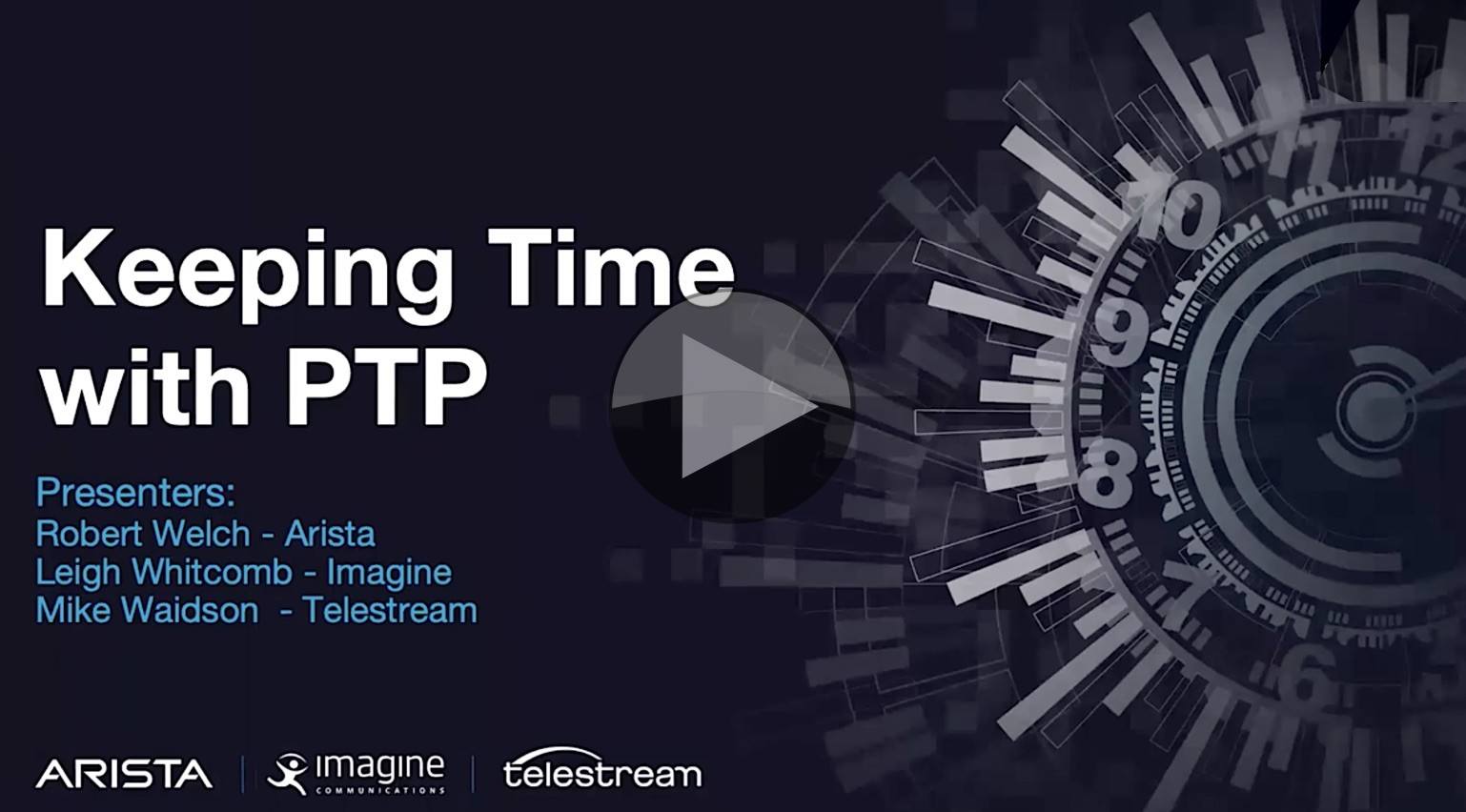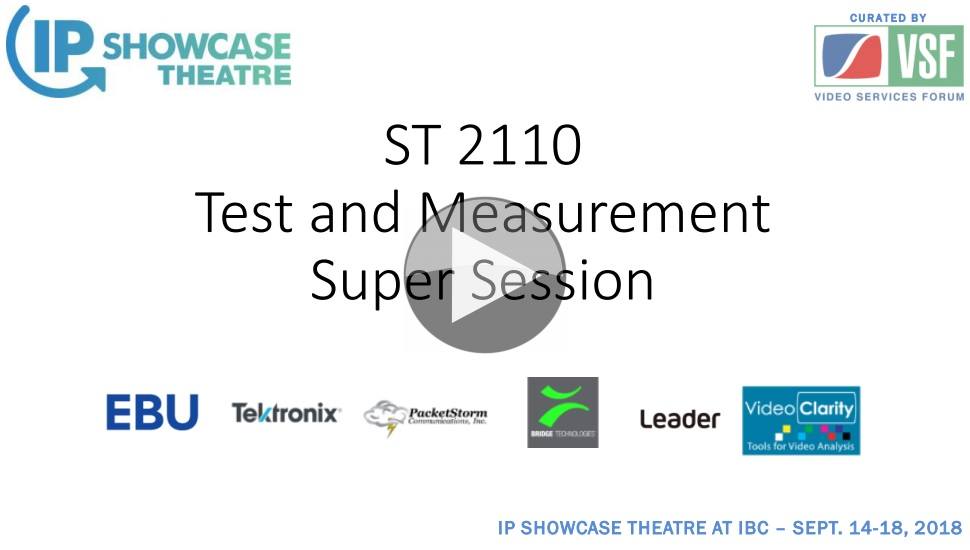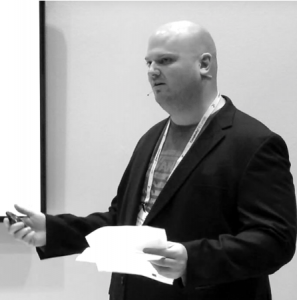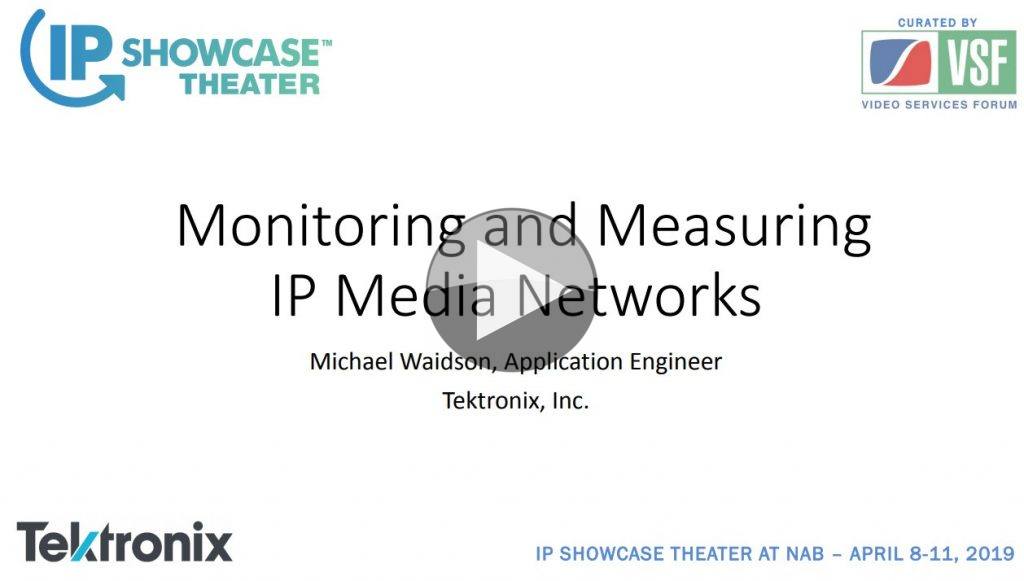Different from his talk of the same name we covered last week, Mike Waidson from Telestream explains the fundamentals of PTP joined by Leigh Whitcomb from Imagine Communications and Robert Welch from Arista. Very few PTP talks include a live BCMA quiz plus, with more time than the IP Showcase talks, this is a well-paced, deep look into the basics.
Mike starts by reviewing how the measurement of time has been more and more accurately measured with us now, typically using atomic clocks. In the TV-domain analogue video used signals for B&B which gave frequency information in the subcarrier and allowed frequency locking and to keep in sync with other signals. NTP has allowed computers and routers on IP networks to keep lock allowing sub-millisecond synchronisation over LANs. Now we have IEEE 1588 PTP which harnesses hardware for maximum precision providing sub-microsecond precision.
Traditionally an SPG would create many different synchronising signals, distributed by DAs. With PTP however, the idea is creating a single time signal on to the network (as well as older signals if necessary). Although, the important thing to remember is that PTP both sends and receives data from the endpoints. GPS is made from 31 active satellites of which only 4 are needed for a lock. But other systems such as the Russian GLONASS, the Chinese BAIDU Navigational system or the European Galileo can also be used, sometimes in conjunction with each other to improve locking speed or give resilience.
Mike and his co-hosts give an overview of the standards that make all this possible, starting with the PTP standard itself IEEE 1588-2019 which is added to by SMPTE 2059. The latter is two standards that, together ensure broadcast devices can usefully harness PTP which is a general, cross-industry standard and track all signals back to a single point in time in 1970. Whilst this may seem extreme, the benefit of doing this is that if we know that all possible types of signal were in-phase at this one point in time, we can extrapolate how each signal should be phased now and use that information to synchronise the system. Upcoming to PTP, we hear, are standardised ways to monitor PTP plus additional security around the standard.
The next section looks at the types of Grandmaster and the fact that each clock works in its own domain. Typically, all your system will be in the same domain, but if you have incompatible situations such as older Dante networks or if you want to have a testing environment, you can use domains to separate your equipment. The standard, as defined by SMPTE 2059 is 127.
Mike then looks at the different types of PTP Message types: Announce, Sync & Follow up, Delay Request, Delay Response and Management Messages (broadcast information, drop second, time zone etc.) He then brings some of these up in Wireshark and talks us through the structure and what can be found within.
The most original part of the talk is the live walkthrough of three different scenarios where Leigh and Robert talk through their thinking on which clock will be the grandmaster and for what reason. This comes down to their understanding of the order of precedence of the metrics such as the manually-allotted priority, then the class of clock, clock accuracy and other values. One value worth remembering is that if your clock is locked to GPS it will have a class of 6, but if it then loses lock, it will become 7.
PTP talks are not complete without an explanation of the sync message exchanges needed to actually determine the time (and the relative delays in order to compute it) as well as the secondary clock types, boundary and transparent. Boundary clocks take on much of the two-way traffic in PTP protecting the grandmasters from having to speak directly to all the, potentially, thousands of devices. Transparent switches, simply update the time announcements with the delay for the message to move through the switch. Whilst this is useful in keeping the timing accurate, it provides no protection for the grandmasters.
Before the talk finishes with a Q&A, the team finish by explaining the difference between operating in unicast and multicast, prioritising PTP traffic using the differentiated services protocol and adding redundancy to the PTP system.
Watch now!
Free registration required
Speakers
 |
Robert Welch Technical Solultions Lead, Arista |
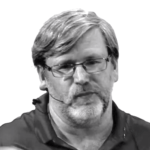 |
Leigh Whitcomb Principal Engineer. Imagine |
 |
Mike Waidson Application Engineer, Telestream |

